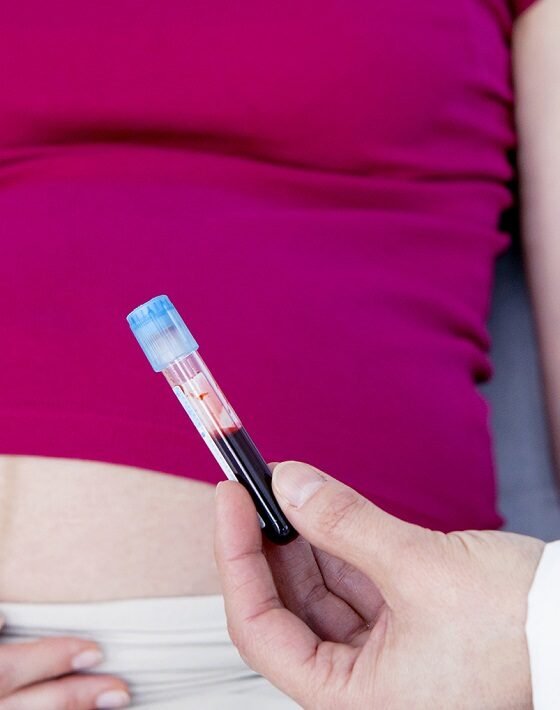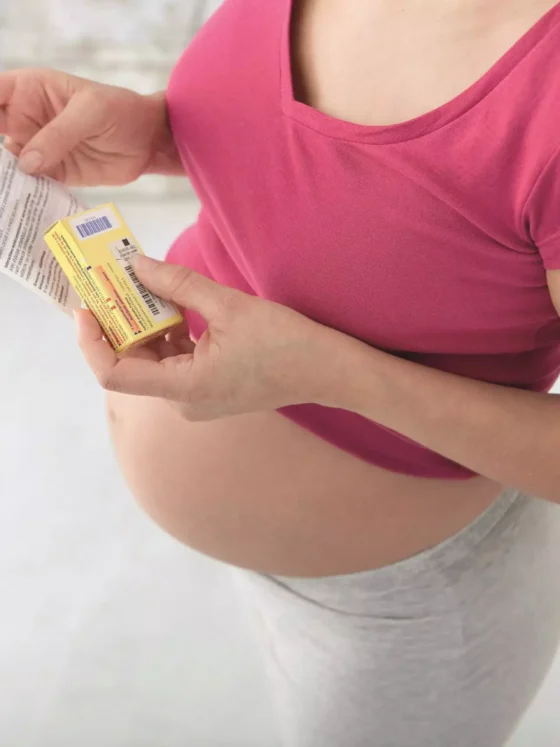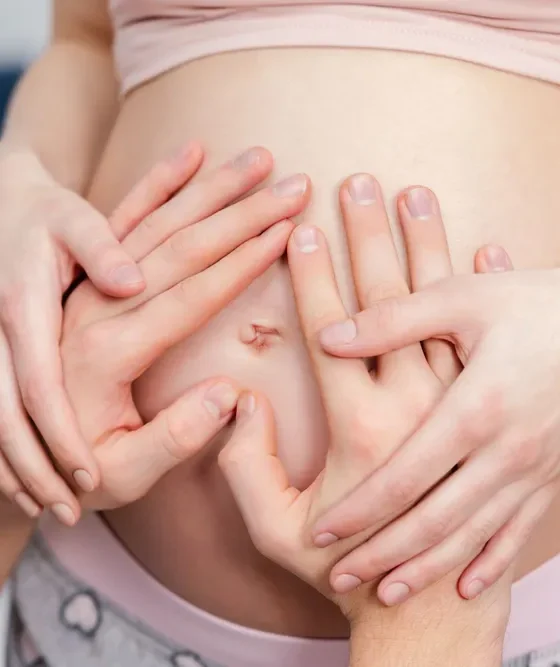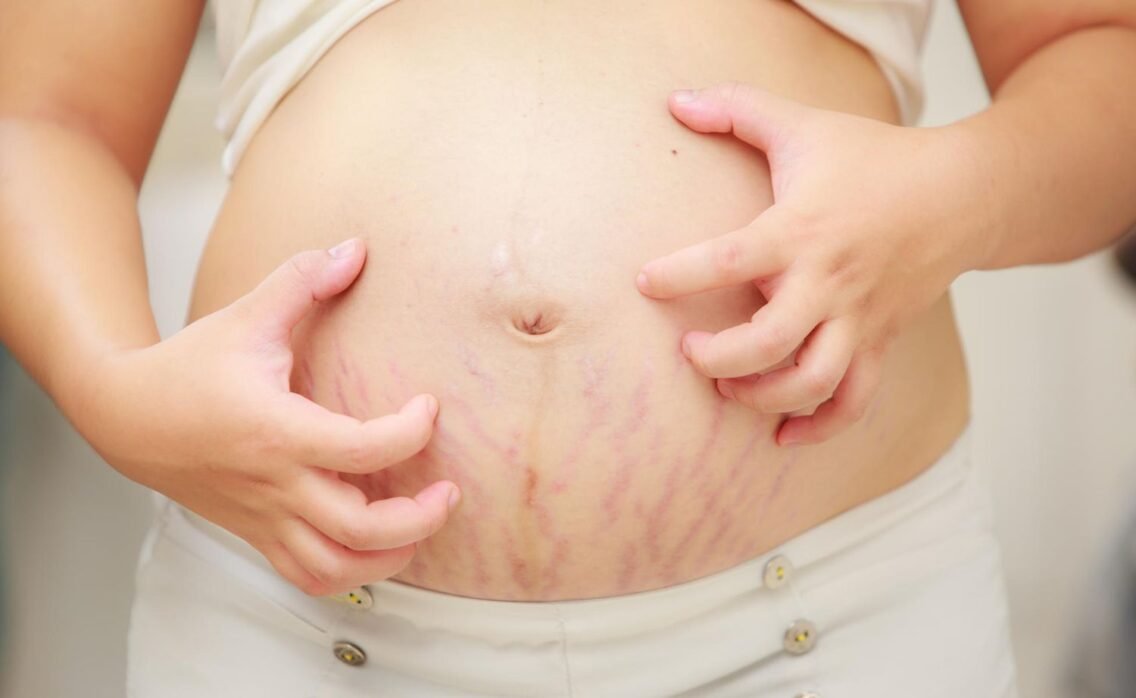
Stretch Marks: What Are They and How Can You Treat Them?
Stretch Marks: What Are They and How Can You Treat Them?
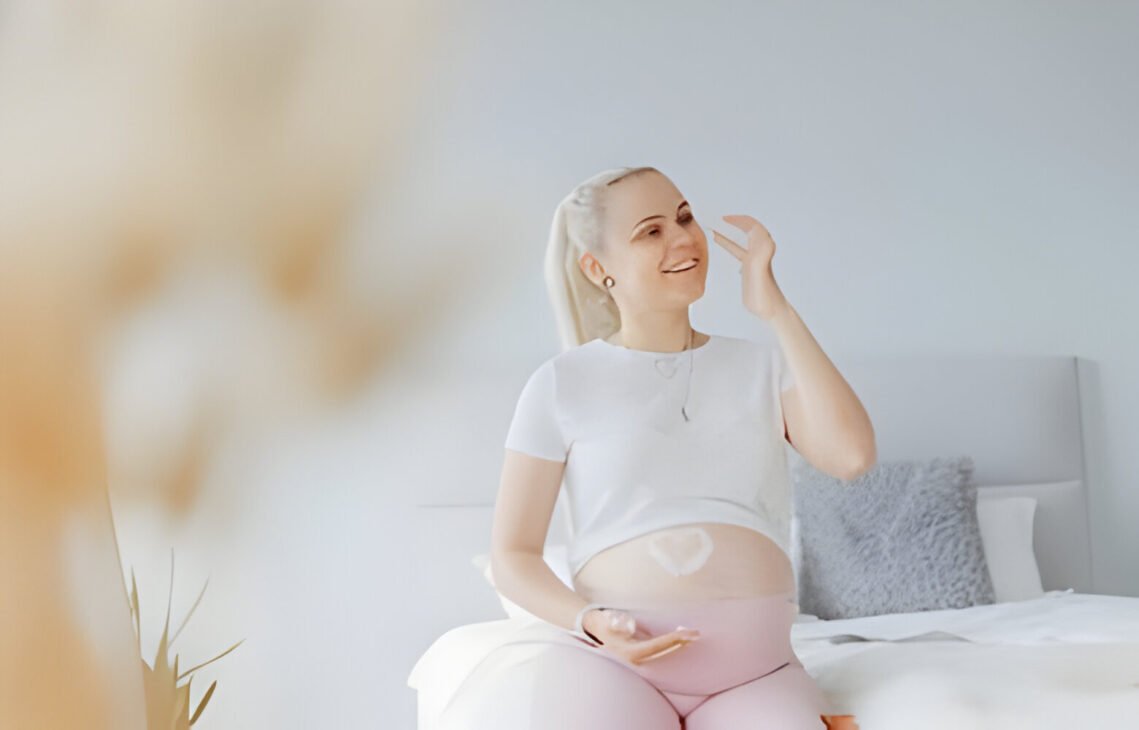
Pregnancy is an incredible journey that brings with it changes to both your body and your life. As your body adjusts to the growth of a new life, it’s common to have questions about stretch marks and how to care for your skin during and after pregnancy. Whether you’re a mom-to-be or just interested in taking care of your skin during pregnancy, read on to discover the secrets to confidently accepting your changing body.
What Are Stretch Marks and Why Do They Form?
First, let’s make it clear: stretch marks are natural! Stretch marks, also called striae, are like nature’s way of showing that our skin can change and adapt. When you’re having a baby, your body does some incredible things to prepare. It makes these special helpers called hormones. They make the stretchy bits in your hips nice and soft, which is perfect for when your baby is ready to come out. They also help your skin become super flexible. As your little one grows inside you, your tummy has to stretch out to make room. This stretching can sometimes leave little marks on your skin, like tiny lines. These are stretch marks. But here’s the neat part: those stretch marks indicate how hard your skin is working. It’s pretty amazing! Your body is stretching and changing to make a comfy spot for your growing baby. So, if you see those little marks, remember, they’re just part of the incredible journey of being a mom. Also, they tend to fade away a bit later.
Common Causes of Stretch Marks
Stretch marks can pop up for a few reasons. They’re like little badges that show we’ve grown or changed quickly. Here’s what can cause them:
- Having a Baby: When you’re expecting, your tummy stretches a lot (especially in those last few months) to make room for your growing baby. This stretching can leave marks, not on your belly but sometimes on your breasts and thighs.
- Teenage Growth Spurts: Remember those times your kids shot up overnight? Those rapid growth periods can leave stretch marks on their back, legs, arms, or bottoms.
- Quick Weight Changes: If you gain or lose weight fast, your skin might not keep up, and you might get stretch marks.
- Certain Creams and Lotions: If you use creams with corticosteroids for a long time, they make your skin less stretchy and more likely to get these marks.
- Family Traits: Just like the color of your eyes, if your parents had stretch marks, you might get them too.
- Getting Muscly: For those who lift weights or do a lot of intense exercise, gaining muscle quickly can stretch the skin and cause marks.
- Health Conditions: Some illnesses, like Cushing’s and Marfan’s syndrome, mess with your body’s cortisone levels and can lead to stretch marks.
- Hormone Shifts: Like with puberty or pregnancy, any significant hormonal changes in your body can lead to these marks.
But remember, stretch marks are normal and don’t mean anything wrong with your health. They’re just part of what makes us unique, like a little story our skin tells about our life’s changes.
What Causes Stretch Marks in Pregnancy?
Stretch marks happen when our skin gets stretched during pregnancy. It can happen when growth spurts occur, we gain or lose weight, or even build muscles. This pulling makes the stretchy fibers in our skin, called collagen and elastin, tear a bit. That’s when we see those lines on our skin. It’s like the skin’s saying, “Hey, I’ve been through some changes!” You might spot them on different body parts, on your belly, hips, thighs, breasts, upper arms, and even your bum. They appear as long, thin lines on the skin. They can be different colors – sometimes reddish or purplish, silvery or white.
Can You Prevent Stretch Marks?
Many moms-to-be worry about getting stretch marks during pregnancy. But the truth is, there’s no surefire way to stop them completely. Stretch marks happen deep in the skin’s layers, where we can’t really reach to prevent them. It’s just one of those things that can come with being pregnant. When you’re pregnant, avoiding stretch marks can be tricky because they’re mostly due to your genes and how your skin stretches naturally. But there are some things you can try to help keep them from getting too noticeable. Although altogether preventing stretch marks can be a challenge, there are steps you can take to reduce their appearance. Skin genetics and elasticity play a role, but drinking water and water-rich foods can help. Using stretch mark creams with ingredients like cocoa butter, shea butter, and vitamin E can also hydrate and support your skin. Stick to a balanced diet to keep your weight in check, essential for not getting too many stretch marks. Foods that are good for your skin include vitamins C and E, zinc, and protein. Try to gain weight slowly and within the limits your doctor suggests, which helps reduce the amount your skin has to stretch. Regular, gentle exercise can keep your skin stretchy and your body healthy. But, always chat with your doctor before starting any activity when you’re pregnant. Wearing sunscreen helps keep your skin healthy and might stop stretch marks from getting darker. A gentle massage while applying the cream helps your blood flow and keeps your skin healthy.
Can you get rid of stretch marks after having a baby?
In short, No, and if you’re wondering about those stretch marks from your pregnancy journey, you’re definitely not alone. We all go through this, and while it’s tough to completely erase them, there are some pretty neat tricks to make them less noticeable. And always remember, it’s important to talk with your doctor before trying anything new, especially when you’re pregnant or nursing. Here’s the lowdown:
Creams and Lotions Galore: There’s a bunch of creams out there that might help. Look for ones with tretinoin or retinoids, which are fancy words for stuff that comes from vitamin A. They help make your skin smoother by boosting collagen. Also, cocoa butter, vitamin E, and hyaluronic acid are like the superheroes of moisturizing and can be kind to those stretch marks. There are stronger creams too, but save those for after nursing. For the best love and care for your skin, start using your stretch mark product as soon as those first marks appear. It’s a bit trickier with older stretch marks, as they might respond differently to the cream. Gently massage the product into your skin – think of it as a bit of pampering for yourself amidst the busy days of motherhood. Consistency is key, so try to make it part of your daily routine right after a warm shower or before bed, and keep at it for several weeks. Patience is your best friend here. It might take a little while before you see changes.
Home remedies: Even though many of us turn to home remedies for stretch mark care, recent research suggests that not all of them work as well as we hope. Using things like almond oil, cocoa butter, olive oil, or vitamin E might not make a big difference in fading those marks. Now, let me share a bit of my journey with you. I remember using a Cocoa Butter Massage Lotion for my belly’s stretch marks. The results were like a little miracle – my tummy became smooth, and the stretch marks seemed to vanish. But here’s the catch – I focused so much on my belly that I forgot about other areas like my hips, thighs, breasts, and even my bum. And guess what? Stretch marks made their grand appearance there. This was a real eye-opener for me about self-care. It’s not just about one area of your body but about embracing and nurturing your whole self. Sure, I can’t turn back time, and those stretch marks on my hips and thighs are now a part of my story. They’re gentle reminders of my journey and the beauty of comprehensive self-love. So, to all you wonderful mamas-to-be, remember that while we can’t entirely stop stretch marks during pregnancy, lovingly applying cream or lotion all over can help lessen their appearance.
Laser Therapy – Pew Pew! This is a fancy option where they use lasers to help your skin look better by boosting collagen and elastin. It’s non-invasive but can be a bit on the pricey side, and you might need a few sessions.
Microdermabrasion and Microneedling: Sounds sci-fi, right? Microdermabrasion is like giving your skin a new start by removing the outer layer. Microneedling, despite the name, is quite gentle. It uses tiny needles to encourage your skin to produce more collagen, helping those stretch marks fade.
This treatment takes off the top skin layers, and as the new skin comes in, your stretch marks might be less of a show-off.
Remember, these tricks might not wipe away stretch marks completely, but they can make a difference. And let’s not forget, those marks are a part of our incredible journey to motherhood. They’re like battle scars of love from carrying our little ones. So, while it’s okay to want to reduce them, they’re also a sign of something truly amazing you’ve done.
How Soon Can You Expect Stretch Marks During Pregnancy?
Curious about when you might start to see those stretch marks? You’re not the only one! Many moms notice them later in their pregnancy, often during the lively and active third trimester. But it’s also not unusual for some to spot them a bit earlier, maybe during the second half of the pregnancy, as your baby bump starts to make its presence known, gently stretching your skin as your little one grows.
You may first see these stretch marks pop up in the second trimester, say between 13 to 21 weeks, as your tummy lovingly stretches to make room for your growing baby. Heading into the third trimester, these little lines might become more visible as your belly blossoms.
But here’s a little mom-to-mom secret: every mom’s experience with stretch marks is unique! It all ties back to factors like your genetic makeup, how your pregnancy weight is coming on, and whether you’re expecting just one little bundle or maybe a couple more. Pregnancy is such a personal, incredible journey. Some moms might go through their pregnancy without a single stretch mark, while others might find them as natural souvenirs of their journey. Either way, they’re a beautiful reminder of the fantastic journey your body is undergoing.
Do stretch marks ever go away?
If you’re peeking down at your tummy and pondering if those stretch marks will ever completely fade away, here’s the scoop: generally, they don’t disappear entirely, but there’s a bright side! As time passes, they tend to get lighter and much less noticeable. After your amazing journey of bringing a new life into the world, you’ll see those stretch marks change, too. Their bold red or dark hue will slowly shift to a gentle, subtle pattern on your skin, almost blending in. And guess what? Sometimes, they might even get so faint you’ll hardly see them. Now, let’s talk about what happened after you’ve had your baby. Some nifty treatments are out there to help those stretch marks blend in even more. But here’s the thing to remember, lovely lady: those stretch marks are a part of your incredible story. They’re a reminder of what your beautiful body has accomplished. So, when you see them, let them symbolize the love and strength it took to bring your little one into your arms.
When is it best to start using stretch mark cream while pregnant?
Wondering about the best time to start using stretch mark cream during your pregnancy? Well, traditionally, many start at the beginning of the second trimester, around the 13th week, or as soon as they notice their bodies beginning to change. But, here’s a little secret: starting earlier can be even better. When you discover a tiny miracle is growing inside you, it’s a fantastic time to begin. Starting in your first trimester really can make a big difference. Think of it as lovingly preparing your skin for the beautiful journey it’s about to embark on. It’s like whispering to your skin, ‘Get ready, we’re going to stretch and grow in the most amazing ways!’ You aim to nurture our skin, making it as elastic and hydrated as possible. By beginning early, especially in the first trimester, you’re giving your skin the best chance to adapt smoothly to all the changes that come with growing a new life. It’s about making your skin ready and resilient for that beautiful baby bump bloom. Gently massage that cream onto your belly, and while you do, chat with your little one growing inside.
Picking the Perfect Stretch Mark Cream?
What’s in the cream counts a lot. Look for skin-loving ingredients like hyaluronic acid, collagen, elastin, vitamin E, and natural oils (cocoa butter, shea butter, and almond oil are my go-to). These goodies help your skin stay hydrated and elastic.
But here’s a heads-up: dodge creams with retinol or retinoids. It’s not the best for you and your little bun in the oven, as they could reach your baby.
Also, your skin might get a bit picky during pregnancy, so if you’ve allergies, make sure the cream matches you. And about scents – if your nose is on high alert these days (thanks, pregnancy!), aim for unscented or lightly scented options to avoid unnecessary sickness.
Consider what you’re after: preventing new stretch marks, treating existing ones, or both. And remember, splurging on expensive creams is only sometimes necessary. Sometimes, budget-friendly, familiar brands do wonders. Also, consider how much cream you’ll need and how often you’ll restock. It’s all about what clicks with your skin and your needs.
When to See a Dermatologist for Stretch Marks?
When you’re trying to tackle stretch marks, it can feel like you’re in a never-ending battle. You might spend much time scrolling through online reviews and trying various creams and lotions promising to make those stretch marks disappear. But sometimes, despite your best efforts and investment, those stubborn marks don’t budge. That’s where stepping into a dermatologist’s office can make a big difference. These skin experts can access treatments you can’t find on a store shelf or in your online shopping cart. They’re more effective, targeted, and based on the latest skincare science. Plus, a board-certified dermatologist can give you the scoop on the newest products or procedures that might be the thing you’re looking for. If your bathroom cabinet is starting to look like a skincare store with little to no results, it might be time to save yourself further hassle and expense by getting a professional opinion. A visit to the dermatologist could be the step that finally gives you the results you’ve been hoping for.



